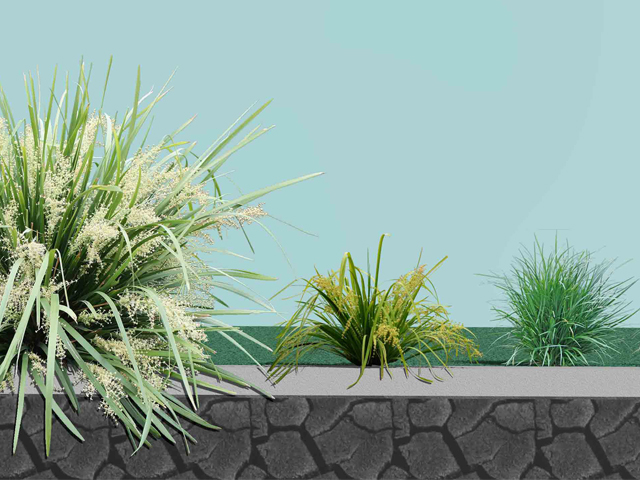MIXED GROUP PLANTINGS: DANGEROUS TREND OR GREAT DESIGN?
There has been a trend recently to use more plants in smaller group plantings rather than in large mass scale plantings. If the right plants are used this can work well, but if weaker plants are used, then the concept is only as good as the weakest plant. So when designing mixed group plantings what do you need to do to make the project work long term?
Firstly, design with a decade of performance in mind as a minimum. Make sure the right soil is being used for the plants chosen. If you want more diversity, use organics in the soil to promote better plant growth.
Remember, someone will need to maintain the landscape, so choose plants and mulch that will reduce future maintenance inputs. Too much diversity impacts greatly on the cost of maintenance.
Pruning or weed control becomes very costly with too much diversity – getting the balance right with enough range to be interesting, but not so much that the cost of maintenance sky rockets is a juggling act.
The best ways to lower maintenance costs include: opting for large scale mass planting with plants that perform for at least a decade that need less pruning, using plants and mulch that help reduce weed pressures and equally as important is being very clever with plant selection for smaller group plantings.
The first and probably most important aspect is to get the soil preparation right; a good soil will help all plants perform far better, but it is not always that simple. Budget constraints often require the use of site soil. In this case, it comes down to plant selection, making sure you only use plants that can cope with the poor soils.
Drainage is another important aspect; if the planting is on the lower side of a path, wet conditions will make that side damp for longer periods, so it is necessary to use plants that can cope with wet feet. If the site is non-irrigated, which is often the case, the plants also need to cope with drought. Mulch selection is one of the most important decisions for the project.
On a commercial landscape, the key role of mulch is to reduce weeds and its secondary role is to help add organics to the soil. Only chunky mulch with close to zero fines achieves the first goal. Mulch with small pieces or lots of fines actually acts as a potting mix and aids the germination of weed seeds.
Avoid tub ground site mulch with fines, as this not only helps weed seeds germinate, it also is often full of disease and can kill most of the plants in a landscape. If you are forced to use this, make sure the plants can cope really well with Phytophthora and other diseases.
Ozbreed has a number of plants that cope with this type of mulch, so if you must use it call Ozbreed and a list of those plants can be provided.
Plant selection is the other really important aspect. Smaller group plantings are only as good as the weakest plant and the maintenance level is often set by the plants that need the most upkeep, so choose plants that need less maintenance.
There are enough good plants available for your region to choose long lasting, low maintenance options and still have good diversity in the project. Ten different plants installed in smaller groups of say 3 to 10 square metres per variety will provide a diverse landscape. NSW, for example, has a varied climate, from humid, hot and dry to very cold regions, so it is important to make sure the plants chosen work in the region.
Website
Send Enquiry To Ozbreed Pty Ltd



